#news in thailand
Explore tagged Tumblr posts
Text
Heatwave in Thailand: Visitors face water deficit to the well-known Koh Phi Phi Islands.

Heatwave in Thailand: Due to a heavy heatwave, visitors to Koh Phi Phi Islands are advised to be mindful of the potential water shortage. The circumstances might cause the water supply to stop. Authorities are thinking about using boat transportation on the mainland as a fix.
Article Source Link
#thailand#heatwave#news in thailand#heatwave in india#heatwave in north india#heatwaves in india#heatwave in north india news updates#heatwave in northern parts of india#thailand news in english#thailand news#latest news in thailand#asia heatwave#south asia heatwave#heatwave india#daily news in thailand#thailand heatwave#heatwave thailand#india heatwave#heat wave in north india#north india heatwave#northern india heatwave#thailand latest news#travel news#travel#sea beach#beach
2 notes
·
View notes
Text
fuck yeah !!!!!!!!!













#thailand#lgbt#lgbtq#lgbtqia#queer#lgbt community#gay#lesbian#mlm#wlw#wholesome#romance#romantic#marriage#wedding#bisexual#bisexuality#lesbians#queer pride#queers#cute#news
90K notes
·
View notes
Text



Source
Happy Pride Month!
#Thailand#good news#pride#pride month#politics#government#the left#news#international politics#current events#lgbt#lgbtq#lgbt rights#same sex marriage#marriage equality#progressive
30K notes
·
View notes
Text

[Image ID: The Destiel confession meme edited so that Dean answers 'Thailand made HRT free for trans people!' to Cas' 'I love you'. /End ID]
source link
7K notes
·
View notes
Text

source 1
source 2
source 3
#destiel meme news#destiel meme#news#world news#thailand#gay rights#gay marriage#marriage equality#gay#lgbtq rights#lgbt rights#lgbtqia#lgbtqia rights#DIVERSITY WIN#congrats thailand#same sex marriage#finally some good fucking news
4K notes
·
View notes
Text



The Malawi government has finally spoken out on the arrest of Malawian farm workers in Israel, clarifying that 12 out of 40 individuals detained are from the country. According to Minister of Information Moses Kunkuyu, the 40 individuals, representing 13 nationalities, were arrested for leaving their designated work stations and seeking employment in town without proper authorization. Kunkuyu revealed that the group, including the 12 Malawians, had abandoned their farm work to seek jobs at a bakery in Bnei Brak, violating Israel’s labor laws and regulations.
Malawi and Israel signed a labor export deal in 2022, allowing Malawi to send unskilled laborers to Israel to work in various sectors, including agriculture and construction. The deal aimed to generate more foreign exchange revenue for Malawi and provide employment opportunities for its citizens. Under the deal, Malawian workers are expected to work in Israel for a maximum of 5 years, with a minimum salary of $1,500 per month. The deal also includes provisions for workers’ safety, health insurance, and protection from exploitation. However, the deal has faced criticism and controversy, with some opposition politicians and human rights organizations expressing concerns about the secrecy surrounding the deal and the potential risks to workers’ safety.
The arrest of the Malawian workers has raised concerns about the treatment of foreign workers in Israel and the effectiveness of the labor deal in protecting their rights. Human rights organizations have called on the Malawian government to take action to ensure the safe return of the detained workers and to review the labor deal to prevent similar incidents in the future. The incident has also sparked debate about the benefits and risks of labor export deals and the need for greater transparency and accountability in such agreements.
The mistreatment of foreign workers in Israel is well documented and would explain why the 45 workers escaped the farm to look for work elsewhere
#yemen#jerusalem#tel aviv#current events#palestine#free palestine#gaza#free gaza#palestine news#news update#malawi#human rights#worker rights#edited#thailand
8K notes
·
View notes
Text
Camera-trapping data revealed in a new study show a steady recovery of tigers in Thailand’s Western Forest Complex over the past two decades.
The tiger recovery has been mirrored by a simultaneous increase in the numbers of the tigers’ prey animals, such as sambar deer and types of wild cattle.
The authors attribute the recovery of the tigers and their prey to long-term efforts to strengthen systematic ranger patrols to control poaching as well as efforts to restore key habitats and water sources.
Experts say the lessons learnt can be applied to support tiger recovery in other parts of Thailand and underscore the importance of the core WEFCOM population as a vital source of tigers repopulating adjacent landscapes.
The tiger population density in a series of protected areas in western Thailand has more than doubled over the past two decades, according to new survey data.
Thailand is the final stronghold of the Indochinese tiger (Panthera tigris corbetti), the subspecies having been extirpated from neighboring Cambodia, Laos and Vietnam over the past decade due to poaching, habitat loss and indiscriminate snaring...
Fewer than 200 tigers are thought to remain in Thailand’s national parks and wildlife sanctuaries, only a handful of which are sufficiently undisturbed and well-protected to preserve breeding tigers.
The most important of these protected areas for tigers is the Huai Kha Khaeng Thung Yai (HKK-TY) UNESCO World Heritage Site, which comprises three distinct reserves out of the 17 that make up Thailand’s Western Forest Complex (WEFCOM). Together, these three reserves — Huai Kha Khaeng Wildlife Sanctuary, Thungyai Naresuan West and Thungyai Naresuan East — account for more than a third of the entire WEFCOM landscape.
Now, a new study published in Global Ecology and Conservation documents a steady recovery of tigers within the HKK-TY reserves since camera trap surveys began in 2007. The most recent year of surveys, which concluded in November 2023, photographed 94 individual tigers, up from 75 individuals in the previous year, and from fewer than 40 in 2007.
Healthy tiger families

The study findings reveal that the tiger population grew on average 4% per year in Hua Kha Khaeng Wildlife Sanctuary, the largest and longest-protected of the reserves, corresponding to an increase in tiger density from 1.3 tigers per 100 square kilometers, to 2.9 tigers/100 km2.
“Tiger recoveries in Southeast Asia are few, and examples such as these highlight that recoveries can be supported outside of South Asia, where most of the good news [about tigers] appears to come from,” said Abishek Harihar, tiger program director for Panthera, the global wildcat conservation organization, who was not involved in the study.
Among the camera trap footage gathered in HKK-TY over the years were encouraging scenes of healthy tiger families, including one instance of a mother tiger and her three grownup cubs lapping water and lounging in a jacuzzi-sized watering hole. The tiger family stayed by the water source for five days during the height of the dry season.
The team of researchers from Thailand’s Department of National Parks, Wildlife and Plant Conservation, the Wildlife Conservation Society, Kasetsart University, and India’s Center for Wildlife Studies deployed camera traps at more than 270 separate locations throughout the HKK-TY reserves, amassing 98,305 days’ worth of camera-trap data over the 19-year study period.
Using software that identifies individual tigers by their unique stripe patterns, they built a reference database of all known tigers frequenting the three reserves. A total of 291 individual tigers older than 1 year were recorded, as well as 67 cubs younger than 1 year [over the course of the study].
Ten of the tigers were photographed in more than one of the reserves, indicating their territories straddled the reserve boundaries. The authors conclude that each of the three reserves has a solid breeding tiger population and that, taken together, the HKK-TY landscape is a vital source of tigers that could potentially repopulate surrounding areas where they’ve been lost. This is supported by cases of known HKK-TY tigers dispersing into neighboring parts of WEFCOM and even across the border into Myanmar.
Conservation efforts pay off
Anak Pattanavibool, study co-author and Thailand country director at the Wildlife Conservation Society, told Mongabay that population models that take into account the full extent of suitable habitat available to tigers within the reserves and the likelihood that some tigers inevitably go undetected by camera surveys indicate there could be up to 140 tigers within the HKK-YT landscape.
Anak told Mongabay the tiger recovery is a clear indication that conservation efforts are starting to pay off. In particular, long-term action to strengthen systematic ranger patrols to control poaching as well as efforts to boost the tigers’ prey populations seem to be working, he said.
“Conservation success takes time. At the beginning we didn’t have much confidence that it would be possible [to recover tiger numbers], but we’ve been patient,” Anak said. For him, the turning point came in 2012, when authorities arrested and — with the aid of tiger stripe recognition software — prosecuted several tiger-poaching gangs operating in Huai Kha Khaeng. “These cases sent a strong message to poaching gangs and they stopped coming to these forests,” he said."
...ranger teams have detected no tiger poaching in the HKK-TY part of WEFCOM since 2013.
-via Mongabay News, July 17, 2024
#tigers#thailand#thai#endangered species#big cats#conservation#wildlife#wildlife conservation#wildlife photography#poaching#good news#hope
2K notes
·
View notes
Text
Good News - June 15-21
Like these weekly compilations? Tip me at $Kaybarr1735! And if you tip me and give me a way to contact you, at the end of the month I'll send you a link to all of the articles I found but didn't use each week!
1. Victory for Same-Sex Marriage in Thailand

“Thailand’s Senate voted 130-4 today to pass a same-sex marriage bill that the lower house had approved by an overwhelming majority in March. This makes Thailand the first country in Southeast Asia, and the second in Asia, to recognize same-sex relationships. […] The Thai Marriage Equality Act […] will come into force 120 days after publication in the Royal Gazette. It will stand as an example of LGBT rights progress across the Asia-Pacific region and the world.”
2. One of world’s rarest cats no longer endangered
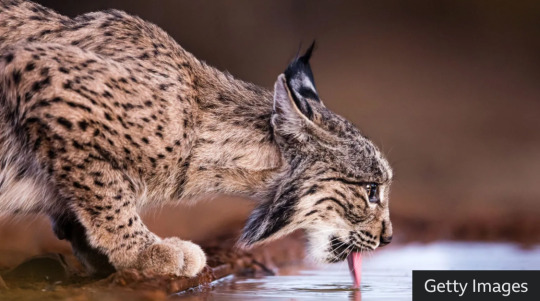
“[The Iberian lynx’s] population grew from 62 mature individuals in 2001 to 648 in 2022. While young and mature lynx combined now have an estimated population of more than 2,000, the IUCN reports. The increase is largely thanks to conservation efforts that have focused on increasing the abundance of its main food source - the also endangered wild rabbit, known as European rabbit. Programmes to free hundreds of captive lynxes and restoring scrublands and forests have also played an important role in ensuring the lynx is no longer endangered.”
3. Planning parenthood for incarcerated men
“[M]any incarcerated young men missed [sex-ed] classroom lessons due to truancy or incarceration. Their lack of knowledge about sexual health puts them at a lifelong disadvantage. De La Cruz [a health educator] will guide [incarcerated youths] in lessons about anatomy and pregnancy, birth control and sexually transmitted infections. He also explores healthy relationships and the pitfalls of toxic masculinity. […] Workshops cover healthy relationships, gender and sexuality, and sex trafficking.”
4. Peru puts endemic fog oasis under protection
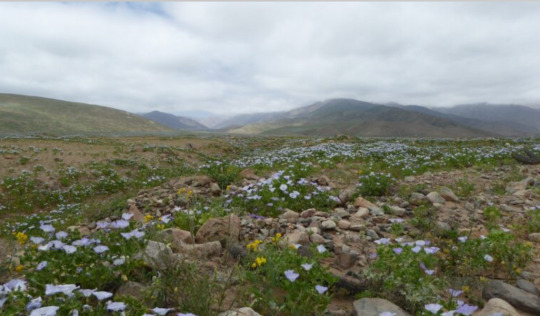
“Lomas are unique ecosystems relying on marine fog that host rare and endemic plants and animal species. […] The Peruvian government has formally granted conservation status to the 6,449-hectare (16,000-acre) desert oasis site[….] The site, the first of its kind to become protected after more than 15 years of scientific and advocacy efforts, will help scientists understand climatic and marine cycles in the area[, … and] will be protected for future research and exploration for at least three decades.”
5. Religious groups are protecting Pride events — upending the LGBTQ+ vs. faith narrative

“In some cases, de-escalation teams stand as a physical barrier between protesters and event attendees. In other instances, they try to talk with protesters. The goal is generally to keep everyone safe. Leigh was learning that sometimes this didn’t mean acting as security, but doing actual outreach. That might mean making time and space to listen to hate speech. It might mean offering food or water. […] After undergoing Zoom trainings this spring, the members of some 120 faith organizations will fan out across more than 50 Pride events in 16 states to de-escalate the actions of extremist anti-LGBTQ+ hate groups.”
6. 25 years of research shows how to restore damaged rainforest
“For the first time, results from 25 years of work to rehabilitate fire-damaged and heavily logged rainforest are now being presented. The study fills a knowledge gap about the long-term effects of restoration and may become an important guide for future efforts to restore damaged ecosystems.”
7. Audubon and Grassroots Carbon Announce First-of-its-Kind Partnership to Reward Landowners for Improving Habitats for Birds while Building Healthy Soils
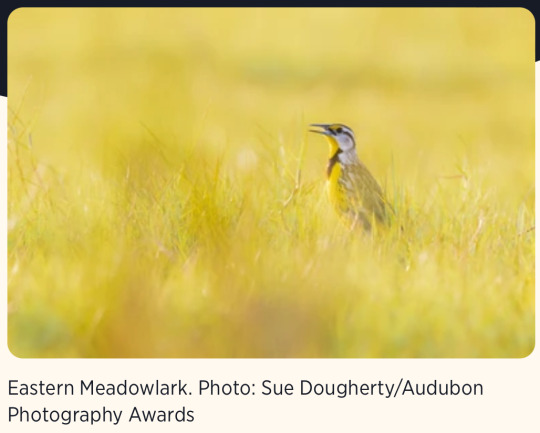
“Participating landowners can profit from additional soil carbon storage created through their regenerative land management practices. These practices restore grasslands, improve bird habits, build soil health and drive nature-based soil organic carbon drawdown through the healthy soils of farms and ranches. […] Additionally, regenerative land management practices improve habitats for birds. […] This partnership exemplifies how sustainable practices can drive positive environmental change while providing tangible economic benefits for landowners.”
8. Circular food systems found to dramatically reduce greenhouse gas emissions, require much less agricultural land
“Redesigning the European food system will reduce agricultural land by 44% while dramatically reducing greenhouse gas emissions from agriculture by 70%. This reduction is possible with the current consumption of animal protein. “Moreover, animals are recyclers in the system. They can recycle nutrients from human-inedible parts of the organic waste and by-products in the food system and convert them to valuable animal products," Simon says.”
9. Could Treating Injured Raptors Help Lift a Population? Researchers found the work of rehabbers can have long-lasting benefits
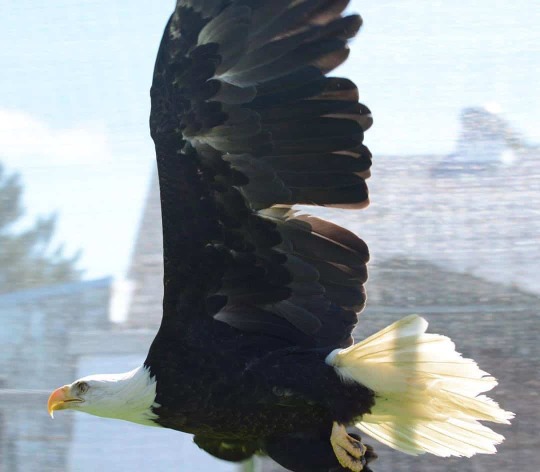
“[“Wildlife professionals”] tend to have a dismissive attitude toward addressing individual animal welfare,” [… but f]or most raptor species, they found, birds released after rehabilitation were about as likely to survive as wild birds. Those released birds can have even broader impacts on the population. Back in the wild, the birds mate and breed, raising hatchlings that grow up to mate and breed, too. When the researchers modeled the effects, they found most species would see at least some population-level benefits from returning raptors to the wild.”
10. Indigenous people in the Amazon are helping to build bridges & save primates
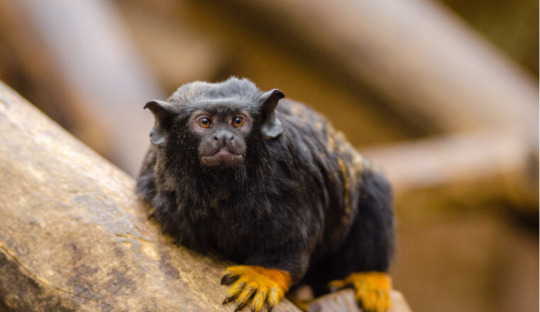
“Working together, the Reconecta Project and the Waimiri-Atroari Indigenous people build bridges that connect the forest canopy over the BR-174 road[….] In the first 10 months of monitoring, eight different species were documented — not only monkeys such as the golden-handed tamarin and the common squirrel monkey (Saimiri sciureus), but also kinkajous (Potos flavus), mouse opossums (Marmosops sp.), and opossums (Didelphis sp.).”
Bonus: A rare maneless zebra was born in the UK
June 8-14 news here | (all credit for images and written material can be found at the source linked; I don’t claim credit for anything but curating.)
#hopepunk#good news#lgbtq#gay rights#gay marriage#same sex marriage#thailand#lynx#big cats#cats#endangered species#endangered#sex education#prison#peru#conservation#habitat#religion#pride#faith#pride month#lgbt pride#compassion#rainforest#birds#nature#climate change#wildlife rehab#wildlife#indigenous
1K notes
·
View notes
Text
New Millipede!!! Sphaerobelum turcosa is a newly discovers species of pill millipede that was recently discovered in the Loei province of Thailand. A team of researchers were doing field work in the Phu Pha Lom Forest when they discovered fourteen of these brightly colored millipedes. Due to their stunning coloration these pill millipedes were nicknamed “The Jewel of The Forest”.
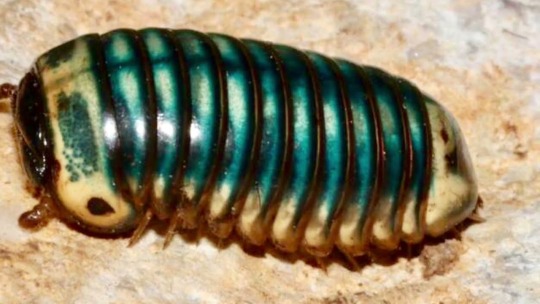
Pill millipedes have convergently evolved a body structure similar to that of isopods (aka roly polies) and have comparatively shorter bodies than other species of millipedes, and like roly polies they will roll themselves into a ball when they feel threatened.
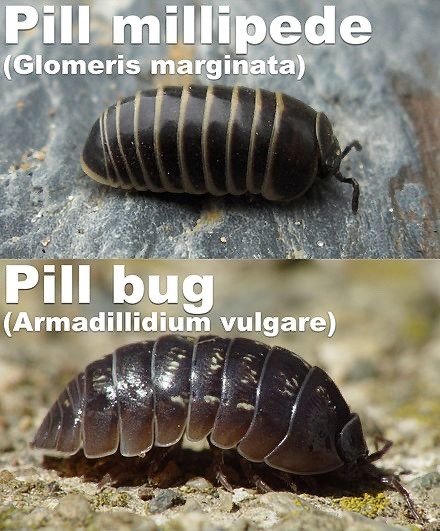
The bright turquoise color of Sphaerobelum turcosa helps warn predators that they are poisonous and not to eat them. This millipede also has tan markings on its exoskeleton that form a mask-like marking that helps to scare off potential predators.
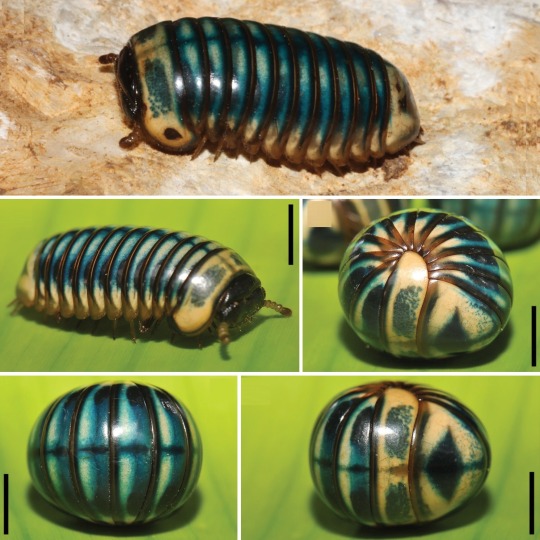
4K notes
·
View notes
Text







testing, testing, i.e. simping, simping
CHERRY MAGIC [TH] | EPISODE 9
#cherry magic#cherry magic thailand#cherry magic th#karanachi#taynew#i was loling & melting simultaneously#tay tawan#new thitipoom#gmmtv#bl drama#asiandramasource#asiandramanet#asianlgbtqdramas#asiandramaedit#mor gifs cherry magic th
2K notes
·
View notes
Text
In Thailand, all males who are 21 must participate in a military draft lottery. If you draw red you serve for two years, if you draw black you’re exempt.
At least nobody overreacted
#meme#memes#humor#comedy#funny#lol#shitpost#wholesome#thailand#world news#happening right now#queer#lgbt community#lgbtq#lgbtqia#lgbt
199 notes
·
View notes
Text




CHERRY MAGIC 30 ยังซิง (2023) dir. X Nuttapong Mongkolsawas
#cherry magic thailand#cherry magic th#tay tawan#new thitipoom#taynew#karanachi#tuserandi#lextag#lightmiup#tusermona#userkimchi#annsbluray#userbon#usergooseras#uservid#tusernix#minhyowon#thai drama#*#*gifs#*cmth#*tay#*new#*taynew#*thdrama
1K notes
·
View notes
Text


Source
#politics#lgbt#lgbtq#good news#government#the left#progressive#gay marriage#same sex marriage#marriage equality#current events#news#Thailand#Asia#international politics
466 notes
·
View notes
Text




this is what i mean when i text someone "IM SCREAMING" with the straightest face ever
#im crying karan's internal scream was so loud he woke up achi up#karanachi#taynew#tay tawan#new thitipoom#cherry magic#cherry magic thailand#cherry magic th#sid x text posts
2K notes
·
View notes
Text













Source : Thailand legalizes same sex marriage.
Follow us: Bluesky, Threads
#news#politics#usa news#us politics#donald trump#news update#public news#world news#breaking news#global news#international news#political news#thailand#same sex marriage#gay marriage#marriage equality#lgbt rights#thai politics#transgender#transfem#trans women#trans pride#lgbtq#lgbtq community#lgbt pride#elon musk#project 2025
252 notes
·
View notes
Text
This Week in BL - Thailand is back in the game
Organized, in each category, with ones I'm enjoying most at the top.
March 2025 Week 3

Ongoing Series - Thai
Sweet Tooth Good Dentist (Fri iQIYI) ep 1 of 12 - Bite me. Of course I fucking adore this. It's exactly the style of BL I like best in the world. I love everything about it including that the dentist is unhinged. Will it push "worst trope" buttons or stay safe? Either way its gonna be fun. Mark is doing a killer job (and looks STUNNING). Plus Jimmy is gonna show up? I'm all in.
Perfect 10 Liners (Sun YT) ep 21 of 24 - I love FaifaWine so much. How am I gonna judge this show when I feel so differently about each pair?

Top Form (Thurs WeTV) ep 1 of 10 - Adaptation of a yaoi starring Boom (Chains of Heart) and Smart (Don't Say No). And... it’s fine. I like the leads quite a bit. There is a part of me though, that wishes this was getting a JBL treatment rather than Thai. I like that it’s gonna be longer this way, but the subject matter just feels more Japanese. The show is engaging enough despite this, or perhaps because of it. It’s interesting to watch Thailand tackle Japanese IP since there is built in stylistic tension. Right now it it is ill-fitting, like a shrunken suit. But it might turn out to be Velcroed on, and suddenly split open or be torn off, so I'm hypnotized. All in all, this is not what I was hoping for, but I'll keep watching if I can (I no longer have VIP status on WeTV).
Flirt Milk (Sat YT) ep 9 or 10 - I think the reason I really dislike the main couple is how truly childlike the uke character is. It’s not kinky, it’s just creepy. I like the second pairing of "arrogant asshole and ultra tsundere uke".
And.... suddenly everybody is getting it on. Of course I like the whole show better now but it’s taken too much to get here and we arrived rather precipitously.
My Golden Blood (Weds iQIYI) Ep 2 of 12 - I’m gonna say it. In addition to not having much chemistry, I don’t think the leads are doing a good job in their roles. They either need to be more campy or less. Joss is pretty darn wooden, but that’s nothing new. So it's Gawin who is disappointing me. He seems to be directed to become something very against his nature, so much so it's an awkward screen presence. It’s all rather unpleasant to watch. It can’t be just me feeling this. Right?
Okay but…
Puts snark hat on:

Are ALL Tong’s fluids potently golden?
ALL OF THEM?
That be a fun use of verse in the future.
(We would never get that lucky though.)
Lost in the Woods (Weds Gaga) ep 1 of 7 - Started with singing which I was not happy about. I also really dislike the main character. I’m not wild about the actor either. I’m not sure if I can watch this show.
Ossan‘s Love Thailand (Mon YouTube) ep 11 of 12 - Already one of the worst shows in BLandia and they just had to put in the amnesia trope! (Insert all & every expletive here. Only don't, because I can't even get worked up about it.) Worst trope ever. What am I supposed to do with myself? This is untenable. Yes yes I could drop it. But with only one more ep, and a serious sunk cost fallacy in play, I am seeing this bullpucky through to the better end.
But I am very bitter about it.

Ongoing Series - Not Thai
Secret Relationships (Korea iQIYI) ep 4 of 8 - It has taken me half the damn show to realize it, but this is Korea doing messy gays! I didn’t recognize, because we so rarely get this trope from KBL. How exciting. I don’t normally like toxic and messy, but I guess I like it now because this show is sending me. Yes yes it's unhinged but for soem reason I'm okay with it.
7 years (SEVEN YEARS) of these insane hyungs sniffing round this poor little gay baby like he's the chosen one in some harem m/m/m/m. It is wild! But I also do finally see why they all like Da-on so much. Good kiss but also... no kissing drunk baby!
Exclusive Love (Taiwan Fri Gaga) ep 7 of 12 - The sides are the only thing that matter in this show. I have taken a stance. Also I LOVE Ian. I had him for 5 seconds and will move mountains for him.
Fight for Love (Vietnam YT) ep 7 end - WAY too much singing. Sigh. But otherwise a fine end.
Summary
A cute but soapy piece from Vietnam about a rich kid with a crush on a busker (who already has relationship problems). Pretty standard chaotic Vietnamese romcom with unhinged characters and a mildly incomprehensible plot about a boy who wants to be a singer and another boy who is in love with him + various exes. It’s fine if you have nothing else to do. (Which seems to be about how the music boy felt about the dude he ended up with.) 7/10
Checkered Shirt (Korea YT) ep 7 of 8 - again I either missed it or it didn’t drop. I'm struggling with YT these days.
It's airing but......
Sashes and Hearts (Pinoy YT) 13 eps - Philippines is doing Drop Dead Gorgeous only all gay boys queening their asses off. Doesn't interest me, not sure if it's BL.
Last Meal Universe (Thai ????) 8 eps - An alien who has come to destroy earth instead falls in love with Thai food and then the Thai boy who cooks it - realistic, actually. I got a link to watch but it still wouldn't work for me, so I guess I'm waiting to see what happens.
In case you missed it
Gelboys (Thai iQIYI) 7 eps - It ended. How do we feel about it? Worth watching?
The Last Time (Thai WeTV) 8 eps - Ended? Anyone watch it?
BamBam of GOT7 just being very Thai about the prettiest contestant ever to be on a survivor show. And that's all Imma say about this rabbit hole. I don't normally cross the streams like this, but this is so BL adjacent and has gotta be someone's fanfic come to life.

I rewatched it - new segment
(because of the slump, here's what I revisited lately)
Minato's Laundromat - holds up
Cosmetic Playlover - holds up
Kiss X Kiss X Kiss: Perfect Scandal - holds all the way up (see gif)
Vending Machine Sono Koi - not so good on the rewatch
Dominant Yakuza and Wimpy Corporate Slave - still as silly as I remember, but not worth rewatching again soon
Hidden Agenda - a frequent rewatch for me, I find JoongDunk a very comforting pair
Bad Buddy - my first rewatch and I gotta say, I think this one was BETTER for me on a rewatch! Such a great show. I would go so far as to say this might be the best Thai BL as an example of OG Thai Uni BL. It just perfect a classic. You just have to like the classics.

Next Week Looks Like This:

Frigay Is Back!
3/28 Heesu in Class 2 (Korea Fri Viki) 10 eps - Trailer. Adaption of the comic by Lily, about a shy unpopular boy with a secret crush on best friend who somehow also ends up his school's relationship counselor. Supposed to have completed filming in 2022, the fact this has been in dev hell since then somewhat mitigates this being my most anticipated BL of it's original year.
3/28 Fight for You (Taiwan Fri Gaga) 12 eps - We haven't had cop/criminal in a long time, and from Taiwan no less, I'm looking forward to this!
2025 Line Up
BL Announced for 2025 - PART 1
BL Announced for 2025 - PART 2
20 BLs Announced for 2025 That I'm Really Excited About
GMMTV 2025 Line Up - My Totally Biased and Wildly Flawed Feels
THIS WEEK’S BEST MOMENT

(last week)
The tag BLigade: @doorajar @solitaryandwandering @my-rose-tinted-glasses @babymbbatinygirl @babymbbatinygirl @isisanna-blog @mmastertheone @pickletrip @aliceisathome @urikawa-miyuki @tokillamonger @sunflower-positiiivity @rocketturtle4 @blglplus @anythinggoesintheshire @everlightly @renafire @mestizashinrin @bl-bam-beyond @small-dark-and-delicious @saezurumurmurs
#this week in BL#BL updates#Sweet Tooth Good Dentist#Perfect 10 Liners#FaifaWine#Fight for Love review#Flirt Milk#My Golden Blood#Ossan's Love Thailand#Checkered Shirt#Secret Relationships#Exclusive Love#Lost in the Woods#upcoming BL#new bl#BL news#BL reviews#2025 BL#thai bl#taiwanese bl#japanese bl#vietnamese BL#korean BL
167 notes
·
View notes